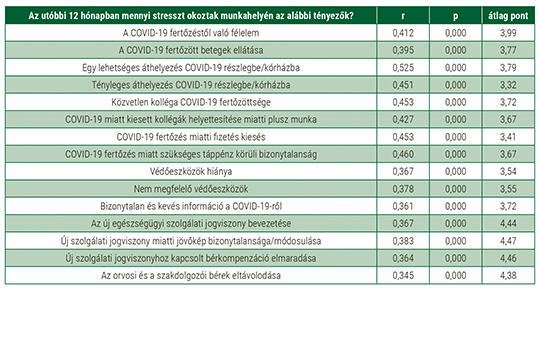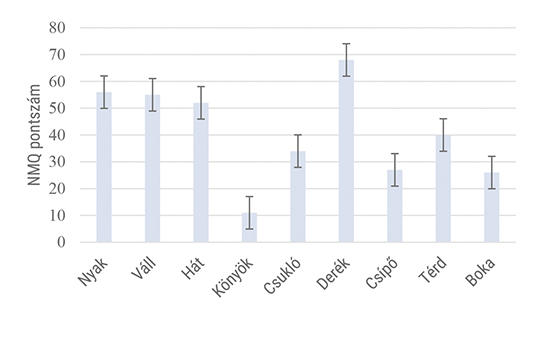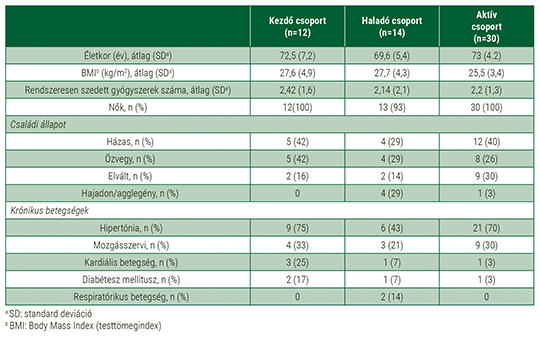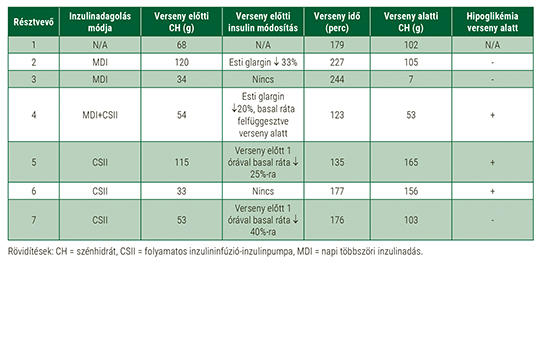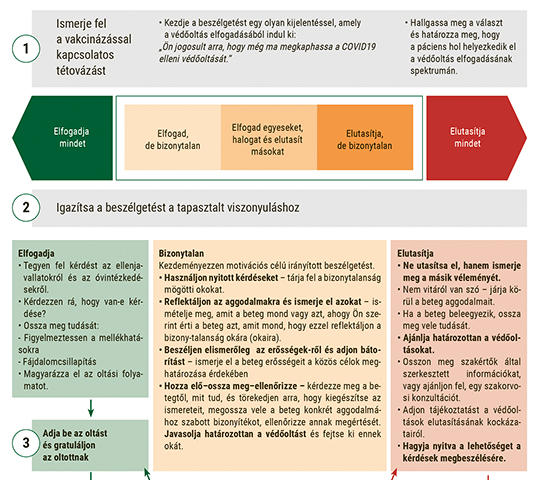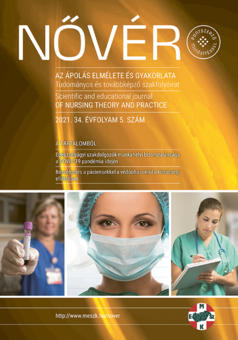The eLitMed.hu medical portal uses computer cookies for convenient operation. Detailed information can be found in the Cookie-policy.
Journal of Nursing Theory and Practice - 2021;34(5)
Content
[Workplace uncertainty among Health Care Workers during the COVID-19 pandemic]
[The present study aimed to assess the level of uncertainty among health care workers triggered by the COVID-19 pandemic and the new health-care service relations. The connections between uncertainty and occupation related and private-life stressors were also analysed.
This non-representative cross-sectional quantitative study was conducted between 21/01/2021-05/02/2021. Data were analysed with Microsoft Excel and SPSS 23.0 for Windows. Descriptive statistics, Spearman’s rank correlation were calculated with p<0,05 level of significance. Workplace-related stressors were possible and actual transfer to COVID-19 wards, extra hours due to substitution, smaller wages and insufficient information about the COVID-19. Private-life stressors included the endangerment of family members, elevated levels of stress at home and the quarantine due COVID-19 infection.
The level of workplace related uncertainty was higher compared to previous years, furthermore it had a strong, positive correlation with all of the stressors (p<0,000).
During the COVID-19 pandemic health-care workers experienced higher level of workplace-related uncertainty and many stressors.]
[In Healthcare with their Health? Examination of the Musculoskeletal Status among Nurses – a cross sectional Study]
[The aim of this study was to assess the work-related musculoskeletal disorders among nurses with internationnally accepted and applied standardized questionnaires.
Our cross sectional research was performed in a hungarian hospital, in September of 2020. Using a non-randomized, convenience sampling, we distributed a self-designed questionnaire among nurses working in 11 different inpatient wards (n=101). Descriptive statistic, two-sample t-test and correlation were calculated using SPSS 26.0 program (p<0,05).
93,07% of respondents had pain or any discomfort in the past 12 months. Musculoskeletal problems were most common in the lower back, followed by the shoulders, cervical and thoracic spine. The most important risk factor for the occurrence of these musculoskeletal disorders was the lifting and moving of totally helpless patients.
This study points out that a significant proportion of the nurses (93,07%) experienced any kind of musculoskeletal pain or discomfort in the 12 months prior to the survey.]
[Physically active lifestyle may help maintain functional ability in elderly]
[Independent lifestyle needs certain physical abilities that are influenced by degenerative joint problems and chronic illnesses, often occurring in older age. Japanese professionals introduced the concept of “locomotive syndrome” to emphasize the importance of the early diagnosis and treatment of musculoskeletal problems amongst the elderly. For screening they use the two-step test and the stand-up test.
The aim of the study: In this study we examined if those who participate in our training program are less likely to develop the locomotive syndrome, and if the extent of fear from falling is lesser than in inactive elderly.
In the study we compared the data of three groups: The inactive group consisted of those who were yet to begin the training program. The subjects in the advanced group participated in the program between half a year and five years. The active group participated in the program for more than five years. We assessed the prevalence of the locomotive syndrome based on the two-step test and stand-up test. Additionally, we assessed the rate of fear from falling.
The rate of fear from falling exceeded the 10 points threshold of fall risk in the inactive group, but not in the other two. The prevalence of locomotive syndrome in the active group is similar to the average in the age group of 10 years younger. In the inactive group however, the prevalence was more than what is typical for 10 years older.
Our results show that the functional decay of the elderly is not imperative. Although it becomes more difficult to do the daily elementary movements, with frequent physical activity it is possible to delay and slow down the regression of functional abilities.]
[Insulin therapy of Athletes With Type 1 Diabetes Mellitus]
[Physical activity is as important for people with diabetes as for healthy people. Many diseases can be prevented or delayed by frequent exercise. Athletes with type 1 diabetes have difficulty adjusting their insulin dosage, which requires the involvement of a dietitian and a diabetologist. The aim of our summary is to assist in the setting of insulin therapy for type 1 diabetic athletes, we have analyzed international guidelines and case studies. Athletes with a well-adjusted diet and insulin therapy are able to achieve good results, however competitive sports can cause a variety of complications, like hypo- and hyperglycemia. Prevention of hypoglycaemia is an essential task. Continuous pre- and inter-race blood glucose monitoring is essential, additional carbohydrate intake and insulin may be required. The professional team uses different techniques to achieve maximum performance, which is influenced by several factors. Analyzing the combined effect of these factors can determine the athlete’s performance.]
[Communicating with Patients about Vaccination in Community Health Care: a Framework for Nurses]
[Vaccines are amongst the most cost-effective preventive actions against infectious diseases. Despite the effectiveness and availability of vaccines, and recommendations from national and international health organizations, vaccination rates among the public remain suboptimal. Vaccine hesitancy is a growing trend, increasing the risk of disease outbreaks and defeating health authorities’ strategies. Correct and trustworthy information for patients plays a key role in decisions on whether to have them vaccinated. Nurses’ knowledge of and positive attitudes, and motivational communication towards vaccination are crucial to meeting the infectious diseases elimination goals. In this article, the authors aim to provide guidance and practical tips for addressing vaccine hesitancy in community health care.]
1.
Clinical Neuroscience
Is there any difference in mortality rates of atrial fibrillation detected before or after ischemic stroke?2.
Clinical Neuroscience
Factors influencing the level of stigma in Parkinson’s disease in western Turkey3.
Clinical Neuroscience
Neuropathic pain and mood disorders in earthquake survivors with peripheral nerve injuries4.
Journal of Nursing Theory and Practice
[Correlations of Sarcopenia, Frailty, Falls and Social Isolation – A Literature Review in the Light of Swedish Statistics]5.
Clinical Neuroscience
[Comparison of pain intensity measurements among patients with low-back pain]1.
Clinical Neuroscience Proceedings
[A Magyar Stroke Társaság XVIII. Kongresszusa és a Magyar Neuroszonológiai Társaság XV. Konferenciája. Absztraktfüzet]2.
3.
Journal of Nursing Theory and Practice
[A selection of the entries submitted to the literary contest "Honorable mission: the joys and challenges of our profession" ]4.
Journal of Nursing Theory and Practice
[End of Life and Palliative Care of Newborns in the Nursing Context]5.
Journal of Nursing Theory and Practice
[Aspects of Occupational Health Nursing for Incurable Patients ]